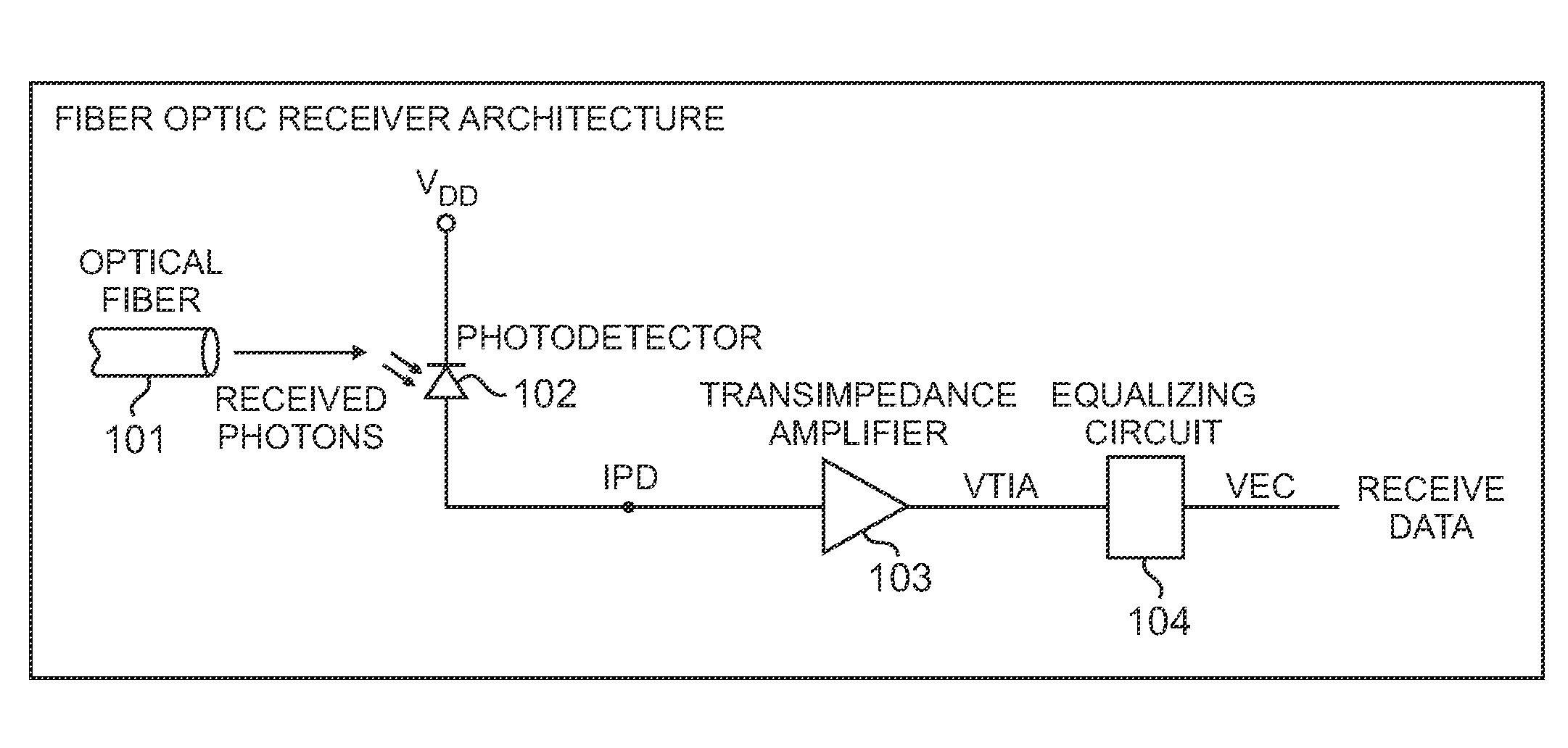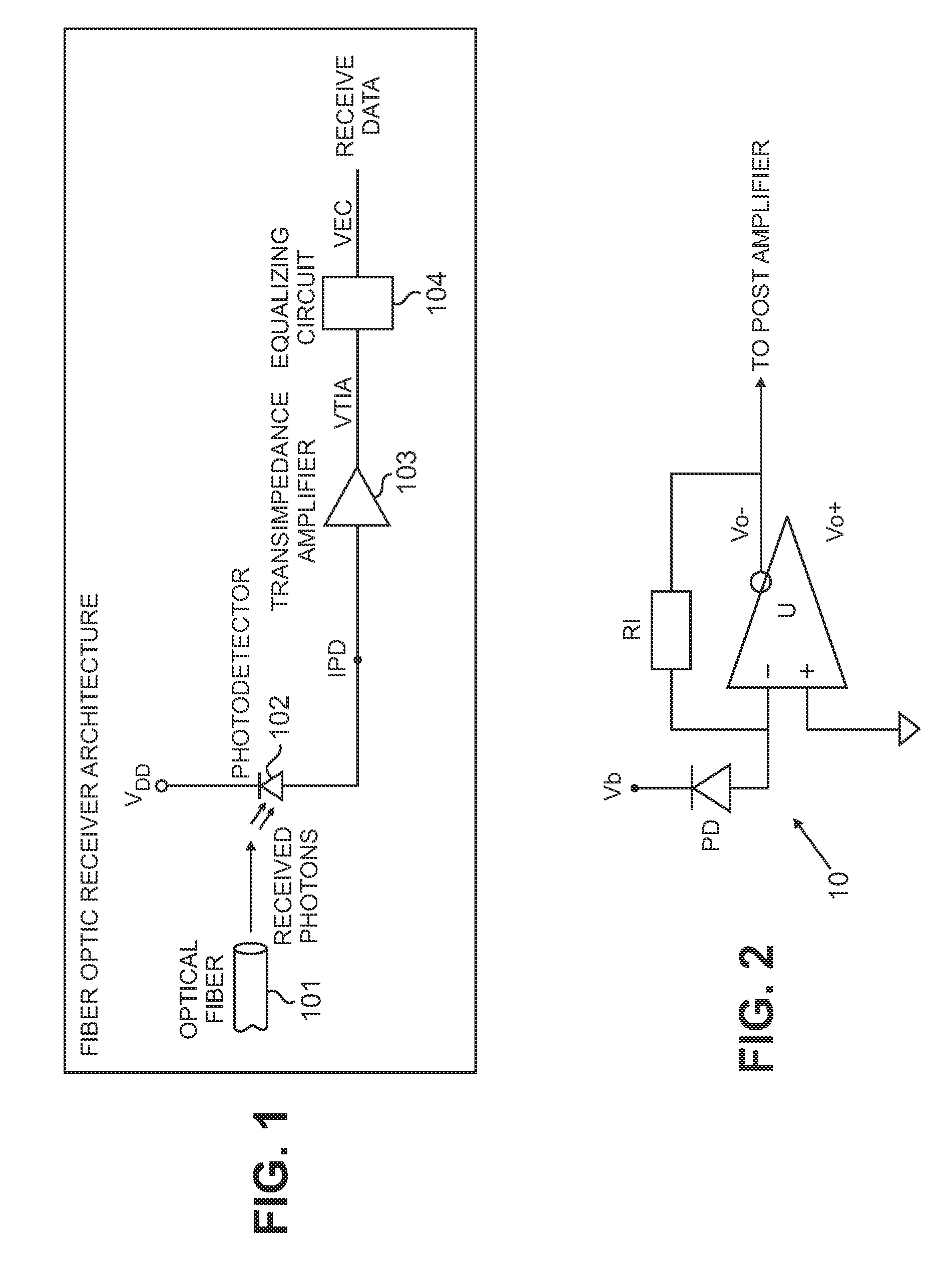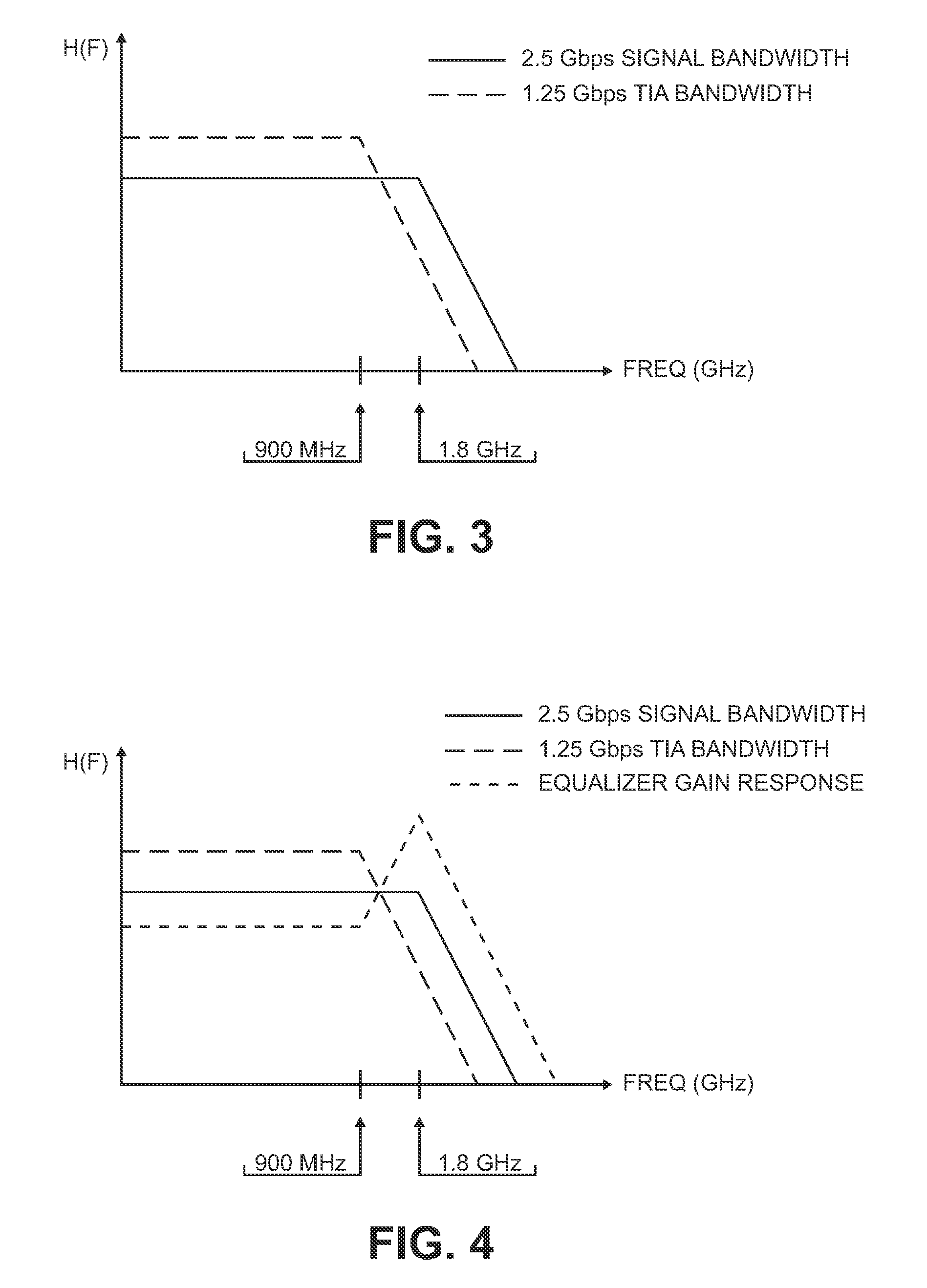High Sensitivity Optical Receiver Employing a High Gain Amplifier and an Equalizing Circuit
a high-gain amplifier and optical receiver technology, applied in the field of optical receivers, can solve the problems of less reliable, apds are generally more expensive, apds are more difficult to tune and calibrate, etc., and achieve the effect of constant net gain
- Summary
- Abstract
- Description
- Claims
- Application Information
AI Technical Summary
Benefits of technology
Problems solved by technology
Method used
Image
Examples
Embodiment Construction
[0022]FIG. 1 is a schematic block diagram of an optical receiver constructed in accordance with the methods and techniques described herein. The light from an optical fiber 101 impinges on a PIN photodiode detector 102, producing a current IPD. Transimpedance amplifier (TIA) 103 converts the relatively small current generated by the photodiode detector into a large signal voltage, VTIA, which is further processed by equalizing circuit 104 to produce a voltage VEC for output to digital circuitry (not shown).
[0023]Two important operating characteristics of the transimpedance amplifier 103 are its transimpedance gain and its bandwidth. A relatively simple illustrative transimpedance amplifier is shown in FIG. 2. The transimpedance amplifier 10 includes a high-speed operational amplifier U having plus (+) and minus (−) inputs and differential outputs labeled Vo− and Vo+. The photodetector PD (e.g., PIN photodiode 102) is connected between a bias voltage source Vb and the minus (−) input...
PUM
 Login to View More
Login to View More Abstract
Description
Claims
Application Information
 Login to View More
Login to View More - R&D
- Intellectual Property
- Life Sciences
- Materials
- Tech Scout
- Unparalleled Data Quality
- Higher Quality Content
- 60% Fewer Hallucinations
Browse by: Latest US Patents, China's latest patents, Technical Efficacy Thesaurus, Application Domain, Technology Topic, Popular Technical Reports.
© 2025 PatSnap. All rights reserved.Legal|Privacy policy|Modern Slavery Act Transparency Statement|Sitemap|About US| Contact US: help@patsnap.com



